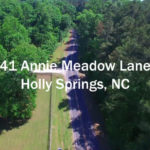Architectural Photography – Corporate Photography
Jeff Philips: Hello everybody. I’m Jeff Philips with In Focus Studios. Welcome to this week’s webisode. I have a returning guest, Kevin Seifert with Kevin Seifert Photography. Kevin, welcome to the show.
Kevin Seifert: Thank you for having me again Jeff.
Jeff Philips: Yeah. I think we’re going to continue on this theme where we talk about corporate photography and how it can benefit a business. Why would someone invest architectural photography?
Kevin Seifert: It’s a good question. The first obvious thing is that a building’s not mobile, so architectural photography can highlight your building, and highlight your office space from afar. It can also be used as a green screen background. It helps people familiarize themselves.
Let’s take a doctor’s office, for instance. What you might do is take really nice architectural photographs of the outside of the building first, so when your new customer comes, and they’re using Google maps or navigation, they come up across your building and they say, “Oh, that’s it, that’s exactly what it looks like in the picture.” Then they come inside and you might be on the third floor, and it’s a shared office space. You might show them the lobby entrance where the elevators are, so they know what that looks like. They’re already more familiar with it, and more comfortable.
Then, when they get up to your office space, you can show them the waiting room. Now, they’re familiar with the waiting room. They know what to expect, if it’s a doctor’s office for kids, they might have a fish tank. You might want to highlight the fish tank as well, so there’s a little bit of information there, and show the reception desk as well. It’s all about making your property more visible, and also familiarizing it for your guests, and hopefully clients and customers.
Jeff Philips: I’m thinking like a hotel, when I go out of town or I visit a hotel website, I see a lot of visuals. Is that how architectural photography is used?
Kevin Seifert: Yeah. Often times in a hotel, the first thing you’ll see is the exterior of the hotel. You’re going to usually see that hotel during the day, and also during the night, because they don’t know when their guests are going to arrive. They want their guests to be as comfortable as possible, and familiar. It might be a Myrtle Beach hotel, and they’re coming from Ohio. In that way, they want to show off the facility and make it comfortable.
Then you’re going to see pictures, let’s say it’s a beach hotel like Myrtle Beach, they’re going to show a picture from the beach looking at the hotel, so you get an idea of how close it is to the beach. They’re also going to take pictures from the hotel of the beach, to display what their views are. That’s going help us as a consumer say, “Wow, that looks like a great view. Why look at other hotels?”
You’re also going to see lobby pictures and room pictures. Most hotels have maybe three to eight different room styles, so they’re going to highlight those. If it’s a hotel that has a lot of different suites, and that’s how they make their money, they’re going to show each room as well. Most of the time, you’re just going to see three to four different types of rooms in there, and that makes you more comfortable when you fall asleep. You know what your surroundings are before you get there.
Jeff Philips: Right. It certainly helps me. You mentioned ‘green screen’ a little while back. What is green screen, and how can a company benefit from utilizing green screen photography?
Kevin Seifert: Okay, that’s a good segway. First I’ll tell you a little bit about green screen. It’s known as chroma key photography. The technology’s been around for a long time. It’s what you see when the weatherman, the meteorologist does his broadcast. He’s actually just filmed in front of either a blue screen or a green screen. Either one of those would be called ‘chroma key.’ They just replace the green or the blue with the background.
As I mentioned before, I said architectural photography can be used for green screen, and that would become your background. Now, your corporate portraits and head shots, if you had a corporate portrait in front of a green screen, we could remove that, and we could put that executive, they could have the boardroom in their background, and that could be pitching towards the business, the business side, or they can be in the lobby and that can be pitching toward making a client, the actual customer, feel comfortable with them. That’s a good use of a green screen.
Jeff Philips: Okay. How else can a company benefit from green screen?
Kevin Seifert: Okay. Green screen’s really fun. We’re starting to do more and more event green screen photography, and that’s where somebody might have a theme to a party. It could be a holiday party. It could be a fundraiser, something like that. A lot of times, it’s a corporate sponsorship.
Let’s take a green screen event that I’ve done recently. They did something, and the theme of the party was the North Carolina coast. What we did was we had pictures of the lighthouses, so this is Old Baldy. Then we just took a portrait and we used that background for the green screen, and we printed out these prints. These are 5×7 prints. Each of these people got a print in less than probably about two minutes. We had some other ones. This is the Oak Island lighthouse, one of my favorite lighthouses. There’s a lot of cool history to the lighthouses. This is a different couple, but same picture, different person. We can just transplant them like they’re there. They’re in the comfortable air conditioning, instead of being out in the August heat and humidity.
Jeff Philips: Wow, nice.
Kevin Seifert: They get a print, and they get a party favor. You can see there’s a logo on the bottom corner, so it’s good for branding and viral marketing as well.
Jeff Philips: Okay. It seems like it’s interactive. If you’re doing it with a company, does it help promote teamwork?
Kevin Seifert: Yeah, definitely. First you have a party favor, and it’s entertainment. Even if it’s your employees, if you give them something, it doesn’t have to be a very expensive thing. It’s a memory maker basically, so it can really improve your worker morale. If they’re going to your holiday party, people feel obligated to go to these, so if you give them something that just let them have fun, they’re going to enjoy it a lot.
It also creates a bonding experience. If we’re working in the same company, you and I, let’s say we’re in an IT company, and you work in one department and I work in another, there’s an opportunity to get those two people in the same picture and it creates a bonding experience across teams. It improves the bonding and the teamwork, and develops camaraderie. It’s a lot of fun. It’s good for entertainment, and it’s also a party favor.
Jeff Philips: Wow, well, very good. Thank you for the information and hopefully you all out there enjoyed it.
Kevin and I have teamed up, and you could get green screen photography service through In Focus Studios. Feel free to leave any comments below. Feel free to share this if this want to, and until next time, take care.



